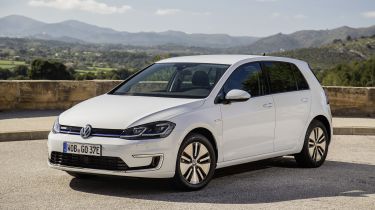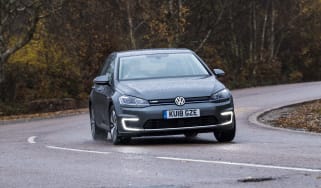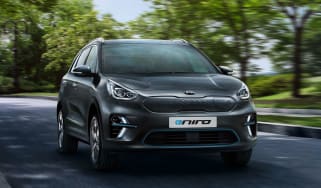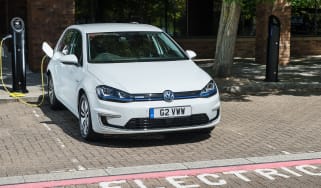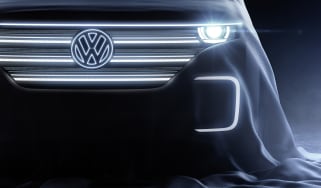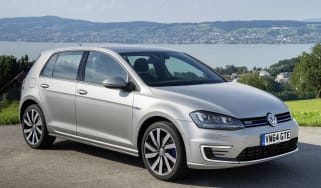Volkswagen e-Golf hatchback review (2014-2020)
“The VW e-Golf blends the famous hatchback’s usual virtues of classy looks, top-quality build and an upmarket image with zero-emissions, all-electric power”
Pros
- Class-leading build quality
- Brisker than you’d think
- Very cheap to run
Cons
- Limited range
- Expensive to buy
- Harsh ride quality
There are two methods of designing an electric car. You can either create something new from the ground up with electric power in mind, like the Nissan Leaf, Hyundai Ioniq Electric, Renault ZOE and BMW i3, or you can convert a proven design to electric power. The Volkswagen e-Golf is an example of the latter approach.
As with its Ford Focus Electric rival, the uninitiated will find a Volkswagen e-Golf tricky to tell apart from its conventional petrol and diesel counterparts. For many, this is central to the appeal of cars like this – they don’t outwardly label you as an electric-car driver, yet allow you to enjoy the benefits of zero-emissions motoring in familiar surroundings.
Like other models in the Golf range, the e-Golf received a range of subtle updates in 2018, with new technology inside and a few visual tweaks outside, including Audi-style scrolling indicators. More significantly, though, battery capacity was boosted to 35.8kWh, together with a more powerful electric motor. The VW's claimed range of 186 miles is shorter than the Nissan Leaf's, but an 80% charge is possible from a 50kW fast charger in 45 minutes.
Home charging is a rather longer process, though – even using a standalone 2.3kW charger you'll need to keep the car plugged in for 17 hours, or just under 11 hours with a faster 3.6kW charger. The fastest domestic charging method is a 7.2kW wallbox, which drops the time to less than five and a half hours.
More reviews
Car trim reviews
In-depth reviews
- Volkswagen Golf R review – the ultimate hot Golf
- Volkswagen Golf review - the go-to family hatchback
- Volkswagen Golf R estate review
Used car reviews
The e-Golf isn't exactly bargain priced, either – at over £28,000 including the government's £4,500 plug-in car grant, it's considerably more expensive than the Nissan Leaf. However, some would say the Golf's classy design, inside and out, make worth the premium. It's also a very easy car to adapt to if you're new to electric motoring – even though the dashboard display shows information like battery life in place of fuel level and engine speed. The rest of the dashboard is the same cleanly styled, high-quality setup as in any other Golf and the passenger accommodation follows a similarly tried-and-trusted layout.
There are some exterior differences between the e-Golf and a regular model, but none that alter the Golf’s desirable, low-key identity. It has a blanked-off radiator grille, and different, aerodynamically optimised alloy wheels to increase range, C-shaped daytime running lights and blue trim detailing to distinguish it from its fossil-fuelled brethren. It looks no less classy than any other Golf, while appearing less utilitarian than the Ford Focus Electric.
The e-Golf’s electric motor sits where the regular Golf’s petrol or diesel engine would and develops 134bhp, all of which is available as soon as you press the accelerator pedal. It gives the e-Golf a surprising turn of speed, with 0-62mph being dispatched in just 9.6 seconds – and thanks to its immediate response it feels quicker than that. A top speed of just 87mph sounds rather restrictive, but the e-Golf feels happy on the motorway.
Unfortunately, the e-Golf’s 318kg battery pack has a pronounced effect on how it rides and handles. It loses some of the regular Golf’s cosseting feel and can’t match the cornering sharpness of the Golf GTI. It also loses out on boot space, which is reduced from 380 to 341 litres.
If you’re considering a move to electric motoring, the big question is whether the no-nonsense e-Golf can match the appeal of the similarly priced but more adventurous BMW i3. Those who'd rather stick with a more familiar package, though, will find a lot to like.
The e-Golf is loaded with equipment, is barely any less practical than any other five-door Golf, and should be just as safe in the event of an accident. It stacks up well for small families who make a lot of urban journeys, as well as city-based business users with a keen eye on costs.
See how this car scored on our sister site Driving Electric

